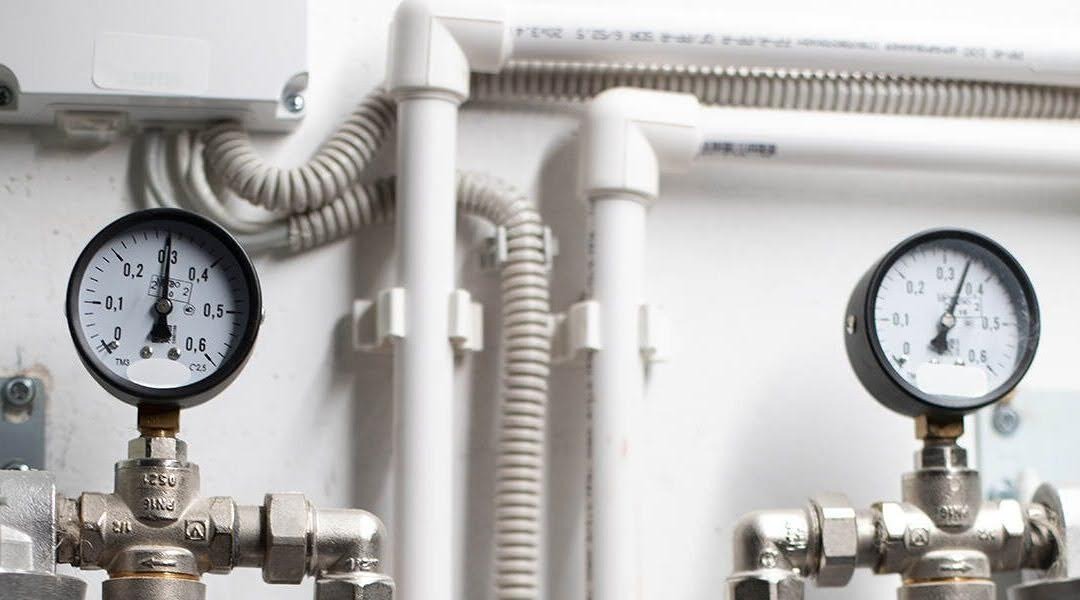What Should a Gas Furnace Pressure Be When Running?
-
 By
Michael Haines
By
Michael Haines
- Jan 7, 2025

What Should a Gas Furnace Pressure Be When Running?
Ensuring that your gas furnace operates at the correct pressure is critical for efficient performance, safety, and comfort. Improper gas pressure can lead to numerous problems, from insufficient heating to serious safety risks such as carbon monoxide leaks. Understanding the correct gas furnace pressure and how to monitor it can help you keep your system running smoothly during the colder months.
This comprehensive guide will cover the key questions:
- What should gas furnace pressure be when running?
- How to check gas pressure at a furnace?
- How do you adjust a gas furnace gas valve?
- What should propane furnace gas pressure be?
- Why is maintaining proper gas pressure so important?
- When should you seek professional help?
Additionally, we'll highlight the wide range of gas furnaces available at AC Direct and how choosing the right unit can set you up for success.
What Should Gas Furnace Pressure Be When Running?
The correct gas furnace pressure when running depends on the type of fuel your furnace uses:
- For natural gas—The manifold pressure should be 3.5 inches of water column (WC).
- For propane gas—The manifold pressure typically ranges from 10 to 11 inches WC.
The pressure is typically set by the furnace manufacturer, and you can find the recommended pressure values on the furnace's data plate or in the owner's manual.
Why Is the Correct Pressure Crucial?
The gas pressure controls how much fuel flows to the burners during operation. If the pressure is too low, the furnace may not produce enough heat to warm your home effectively. If it's too high, the combustion process can become inefficient, resulting in excess soot, overheating, or damage to internal components.
By maintaining the correct gas pressure, your furnace will:
- Operate efficiently, helping to lower energy costs.
- Heat your home evenly and effectively.
- Burn fuel cleanly, reducing emissions and safety risks.
How to Check Gas Pressure at a Furnace?
Regularly checking your furnace's gas pressure ensures the system is operating within safe and efficient parameters. Here's a detailed guide to help you measure gas pressure safely.
Tools You'll Need
- Manometer: A device used to measure gas pressure.
- Screwdriver and Wrench: For accessing and adjusting the gas valve.
- Safety Equipment: Gloves and goggles to protect yourself while working with gas components.
Step-by-Step Guide
- Turn Off the Power and Gas Supply
Before starting, switch off the furnace and shut off the gas supply to prevent leaks or accidents. - Locate the Gas Valve
Open the furnace access panel to find the gas valve, which controls the flow of fuel to the burners. - Find the Pressure Ports
The gas valve has two pressure test ports: - The inlet port measures the gas supply pressure.
- The outlet port measures the manifold pressure.
- Connect the Manometer
Attach the manometer to the outlet port. Make sure the connection is secure to prevent gas leaks. - Turn the Gas and Furnace Back On
Restore the gas supply and power. Allow the furnace to run for a few minutes before taking measurements. - Read the Manometer
Check the manometer reading. It should match the recommended pressure specified by the furnace manufacturer (3.5 inches WC for natural gas and 10–11 inches WC for propane). - Turn Everything Off
After taking the reading, turn off the furnace and gas supply before disconnecting the manometer.
Safety Tips
- Never attempt to check gas pressure if you're unsure about the process.
- Use the proper tools and follow all safety precautions to avoid accidents.
- If the pressure is outside the recommended range, you may need to adjust the gas valve or call a professional HVAC technician.
How to Perform a Gas Furnace Gas Valve Adjustment?
If the gas pressure is too high or too low, you can adjust the furnace gas valve to bring it within the recommended range.
Steps to Adjust the Gas Valve
- Locate the Adjustment Screw
The gas valve has an adjustment screw near the outlet port. Refer to the manufacturer's manual for its exact location. - Increase or Decrease Pressure
- To increase pressure: Turn the adjustment screw clockwise.
- To decrease pressure: Turn the adjustment screw counterclockwise.
- Recheck the Pressure
After making an adjustment, use the manometer to confirm the pressure has reached the desired value. Repeat if necessary. - Secure the Gas Valve
Once the adjustment is complete, securely tighten the screw and close the access panel.
When to Adjust the Gas Valve
You may need to adjust the gas valve if:
- The furnace fails to produce enough heat.
- You notice irregular or yellow flames (the flame should always be steady and blue).
- The furnace cycles on and off too frequently.
What Should a Propane Furnace Gas Pressure Be?
If you're using a propane furnace, the gas pressure settings differ slightly from those of natural gas furnaces.
Standard Pressure for Propane Furnaces
- The manifold pressure for propane furnaces should be between 10 and 11 inches WC.
Why Does Propane Require Higher Pressure?
Propane is more energy-dense than natural gas, meaning it delivers more heat per unit of volume. The higher pressure ensures the propane is properly atomized and burned in the combustion process.
Signs of Incorrect Propane Furnace Gas Pressure
- Low Pressure: Results in weak flames or insufficient heat production.
- High Pressure: Produces overly large flames, soot buildup, or even overheating.
Regularly checking and maintaining propane furnace gas pressure is crucial for safety and efficiency.
Why Is Maintaining Proper Gas Pressure So Important?
The importance of correct gas pressure cannot be overstated. Here's a closer look at the risks and benefits:
Risks of Incorrect Gas Pressure
- Incomplete Combustion: Low gas pressure may prevent the burners from combusting all the fuel, leading to carbon monoxide production—a dangerous and potentially deadly gas.
- Reduced Heating Efficiency: Low pressure can prevent the furnace from delivering enough heat to keep your home comfortable.
- Component Damage: High pressure can stress internal parts, such as burners and heat exchangers, leading to premature failure and costly repairs.
Benefits of Correct Gas Pressure
- Maximizes energy efficiency and lowers utility bills.
- Improves furnace performance, keeping your home warm and comfortable.
- Extends the lifespan of your heating system.
When Should You Call a Professional?
If you're not confident in your ability to check or adjust gas pressure, it's best to call a licensed HVAC technician. A professional can diagnose and resolve gas pressure issues safely and efficiently.
What to Expect from a Technician
- Accurate gas pressure testing with advanced tools.
- Safe and precise furnace gas valve adjustment.
- A thorough furnace inspection to identify any other potential issues.
Work with a local professional to help ensure your furnace stays in top condition.
Gas Furnaces at AC Direct
Selecting the right furnace is just as important as maintaining proper gas pressure. At AC Direct, we offer a wide range of high-efficiency gas furnaces to suit your home's heating needs.
Top Models Available
- Two-Stage Furnaces
- Examples: Goodman GCV models (40,000–120,000 BTU)
- Benefits: Enhanced comfort and efficiency with two-stage operation.
- Compatible with natural gas or propane.
- Single-Stage Furnaces
- Examples: Goodman GM9S models (40,000–80,000 BTU)
- Benefits: Reliable performance for homes with consistent heating needs.
- ENERGY STAR® Certified Units
- Most Goodman models meet or exceed ENERGY STAR® standards, making them energy-efficient and cost-effective.
Why Choose AC Direct?
- Wide selection of gas furnaces tailored to various home sizes and fuel types.
- Transparent product details to help you make an informed decision.
- Exceptional customer support to guide you through the buying process.
FAQs
1. What Should Gas Furnace Pressure Be?
For natural gas, the pressure should be 3.5 inches WC, and for propane, it should range between 10 and 11 inches WC. Always refer to your furnace's data plate for specific recommendations.
2. How Do You Check Gas Pressure at a Furnace?
You'll need a manometer to measure the pressure at the gas valve ports. Ensure you follow safety protocols and consult a professional if you're unfamiliar with the process.
3. Can Incorrect Gas Pressure Damage My Furnace?
Yes. Low pressure reduces efficiency, while high pressure can damage components and create safety hazards, such as carbon monoxide leaks.
4. How Do You Perform a Furnace Gas Valve Adjustment?
Locate the adjustment screw on the gas valve, then turn it clockwise to increase or counterclockwise to decrease pressure. Always recheck the pressure after each adjustment.
Key Takeaways
- Learn what gas furnace pressure should be and ensure your furnace operates efficiently and safely.
- Always verify your furnace's pressure settings match the manufacturer's recommendations (3.5 inches WC for natural gas and 10–11 inches WC for propane).
- Regular maintenance, including checking propane furnace gas pressure and performing gas valve adjustments, helps prevent performance issues and extend the system's lifespan.
- If you're unsure about any step, don't hesitate to contact a licensed HVAC technician.
By maintaining proper gas pressure, you can enjoy a warm and safe home throughout the heating season.
Take Control of Your Home's Heating Today
Maintaining the correct gas pressure is key to ensuring your furnace operates safely and efficiently. By regularly checking and adjusting your furnace's gas pressure, you can avoid performance issues, reduce energy costs, and extend the life of your heating system.
When it's time to upgrade or replace your furnace, AC Direct has you covered with a comprehensive selection of gas furnaces. From compact models for smaller spaces to high-capacity units for larger homes, you'll find options designed for reliability, comfort, and efficiency.
Get Started Now
Explore our selection of gas furnaces and find the perfect solution for your home. With the right furnace and proper maintenance, you'll enjoy a warm and comfortable home all winter long!

 and now, NASCAR Racing Sponsor
and now, NASCAR Racing Sponsor










